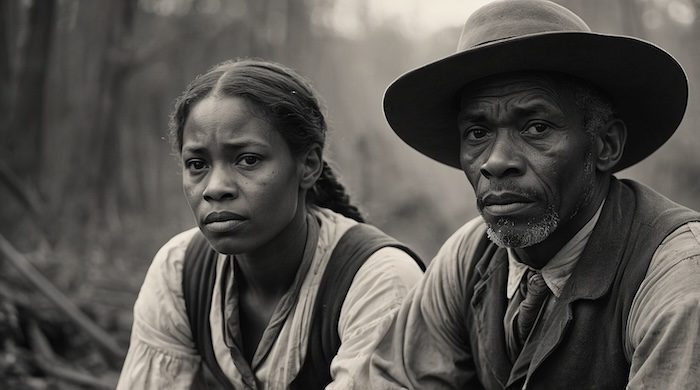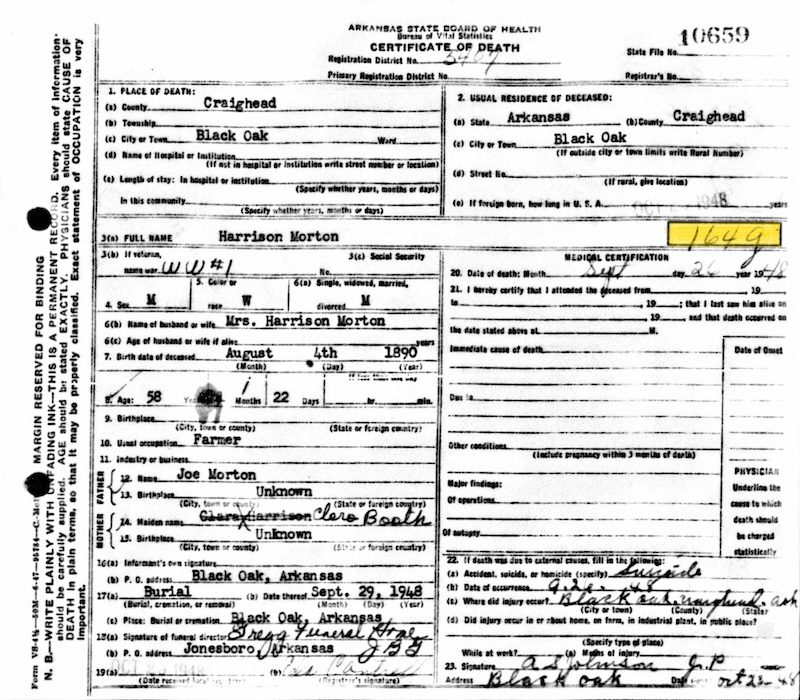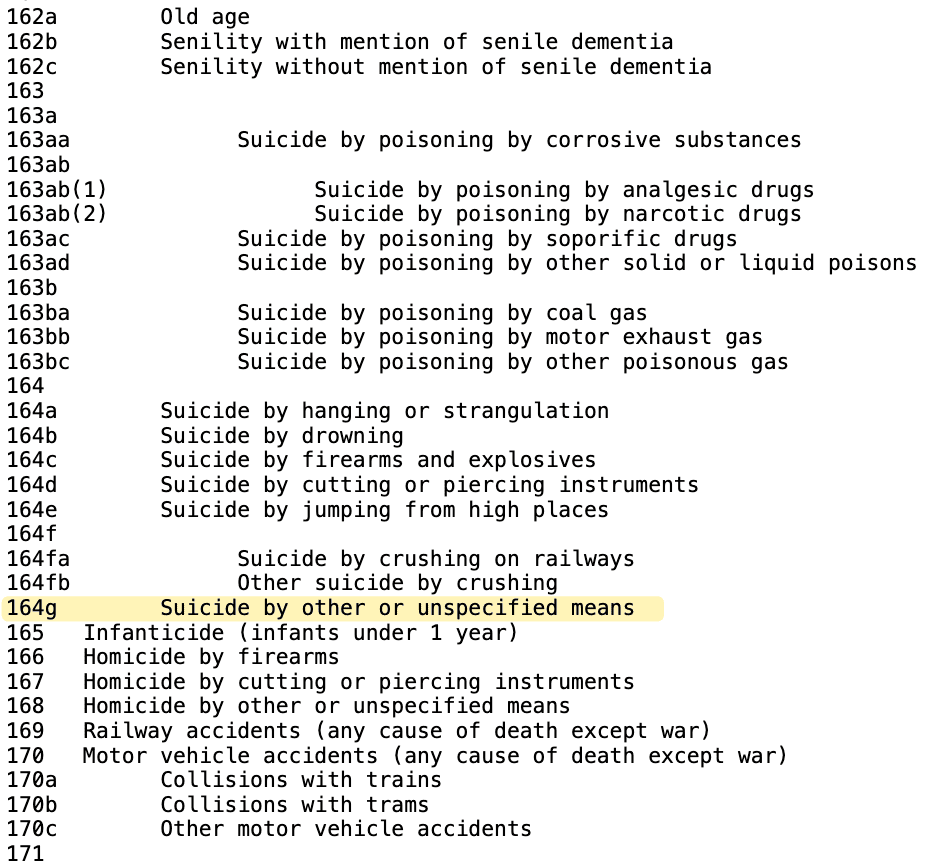
Vital Records
Researching Genealogy in the Digital Age
What Are Vital Records?
Virtual records are digitized or transcribed documents that allow genealogists to access vital information online, even when the original files are stored in courthouses or archives. For African American family history, these records are essential. They provide rare insights into births, deaths, and community life, filling the gaps left by slavery, segregation, and inconsistent state recordkeeping.
This page introduces the major categories of vital records available online and highlights special record sets created during emancipation and gradual abolition.
Birth Records
Birth certificates document a child’s date and place of birth, parents’ names, and sometimes additional details such as occupation or place of residence. In most U.S. states, statewide birth registration did not begin until the early 20th century. Researchers often must rely on delayed records, church registers, or county-level filings.
Delayed Birth Certificates
Delayed birth certificates were issued for individuals born before state registration laws took effect, often in the early 1900s, when Social Security applications required proof of birth. They are a valuable substitute for standard birth records.
📌 Learn more about delayed birth certificates on FamilySearch.
Delayed Birth Certificate?
State-level recording year of vital records
Note: Earlier records may be found at the local county or parish level.
| State | Birth Records | Marriage Records | Death Records |
| Alabama | 1908 | 1936 | 1908 |
| Alaska | 1913 | 1913 | 1913 |
| Arizona | 1909 | 1909 | 1909 |
| Arkansas | 1914 | 1917 | 1914 |
| California | 1905 | 1905 | 1905 |
| Colorado | 1907 | 1907 | 1907 |
| Connecticut | 1897 | 1897 | 1897 |
| Delaware | 1861 | 1847 | 1881 |
| District of Columbia | 1874 | 1811 | 1874 |
| Florida | 1899 | 1927 | 1899 |
| Georgia | 1919 | 1952 | 1919 |
| Hawaii | 1842 | 1842 | 1859 |
| Idaho | 1911 | 1947 | 1911 |
| Illinois | 1916 | 1962 | 1916 |
| Indiana | 1907 | 1958 | 1899 |
| Iowa | 1880 | 1880 | 1880 |
| Kansas | 1911 | 1913 | 1911 |
| Kentucky | 1911 | 1958 | 1911 |
| Louisiana | 1914 | none | 1914 |
| Maine | 1892 | 1892 | 1892 |
| Maryland | 1898 | 1950 | 1898 |
| Massachusetts | 1841 | 1841 | 1841 |
| Michigan | 1867 | 1867 | 1867 |
| Minnesota | 1900 | 1958 | 1908 |
| Mississippi | 1912 | 1926 | 1912 |
| Missouri | 1910 | 1881 | 1910 |
| Montana | 1907 | 1943 | 1907 |
| Nebraska | 1905 | 1909 | 1905 |
| Nevada | 1911 | 1968 | 1911 |
| New Hampshire | 1901 | 1901 | 1901 |
| New Jersey | 1848 | 1848 | 1848 |
| New Mexico | 1920 | 1920 | 1920 |
| New York State | 1880 | 1880 | 1880 |
| North Carolina | 1913 | 1962 | 1913 |
| North Dakota | 1907 | 1925 | 1907 |
| Ohio | 1908 | 1949 | 1908 |
| Oklahoma | 1908 | 1908 | 1908 |
| Oregon | 1903 | 1906 | 1903 |
| Pennsylvania | 1906 | 1885 | 1906 |
| Rhode Island | 1853 | 1853 | 1853 |
| South Carolina | 1915 | 1950 | 1915 |
| South Dakota | 1905 | 1905 | 1905 |
| Tennessee | 1908 | 1945 | 1908 |
| Texas | 1903 | 1966 | 1903 |
| Utah | 1905 | 1887 | 1905 |
| Vermont | 1955 | 1955 | 1955 |
| Virginia | 1912 | 1912 | 1912 |
| Washington State | 1907 | 1968 | 1907 |
| West Virginia | 1917 | 1964 | 1917 |
| Wisconsin | 1907 | 1907 | 1907 |
| Wyoming | 1909 | 1941 | 1909 |
Birth Returns for Negroes and Mulattoes (1788-1826)
Between 1788 and 1826, several states passed laws requiring the registration of births of children born to enslaved mothers or to free Black families. Known as “Birth Returns for Negroes and Mulattoes,” these records served multiple purposes: documenting gradual emancipation, proving free status, and monitoring the growth of free Black communities.
Key Features of These Records:
- ➡️ Recorded by law: Overseers of the poor, county clerks, or justices of the peace were responsible for maintaining these returns.
- ➡️ Vital genealogical data: Entries may include the child’s name, date of birth, mother’s name, status (enslaved or free), and sometimes the name of the enslaver or father.
- ➡️ Proof of free status: In gradual emancipation states, such records were required to show that children born after a certain date would eventually be free.
- ➡️ Community continuity: For descendants today, these records can confirm kinship connections during a period when enslaved families were rarely documented in official records.
State Resources and Access Points
➡️ These resources are essential for anyone tracing African American ancestors in the early national period. They document names and family connections decades before federal census records listed Black individuals in detail.
| Delaware - Birth Returns for Negroes and Mulattoes | ||
| Register of Births and Deaths | Slavery Papers | |
| Delaware Laws Of 1829 | ||
| Maryland - Birth Returns for Negroes and Mulattoes | ||
| Descriptions of African American Records | MARYLAND INDEXES (Freedom Records, PG, Index) 1806-1869 | |
| African American Resources | Researching African American Families | |
| New Jersey - Birth Returns for Negroes and Mulattoes | ||||||
| Roll & Item # | County | Roll & Item # | County | |||
| 24 - 4 | Bergen CountySussex County, Births of slaves, 1801-1835. | 116 - 7 | Certificate and Deeds of Manumissions | |||
| 24 - 5 | Bergen County Black Births, 1804-1846 | 116 - 8 | Certificates and Deeds of Manumissions | |||
| 116 - 1 | Essex County Birth records of Black Children, 1804-1843 | 11 | Middlesex County, Births of slaves, 1804-1844. | |||
| 116 - 2 | Essex County Record of Births, Black Children | 11 | Middlesex County Manumissions | |||
| 116 - 4 | Index, Certificate and Deeds of Manumissions | 11 | Middlesex County Manumissions | |||
| 116 - 5 | Certificates and Manumissions | 5 - 1 | Sussex County Manumissions of Slaves | |||
| 116 - 6 | Index, Certificate and Deeds of Manumissions | 5 - 3 | Sussex County Births of Slaves 1801-1835 | |||
Death Records
Death Certificates
Death certificates usually record the name of the deceased, date and place of death, age, occupation, cause of death, and parents’ names (when known). For African Americans, they can be especially valuable as they sometimes include information about the formerly enslaved generation.
Why is this Primary Information? This is because the death is the main subject of the document, and information regarding the deceased’s passing is testified to by a doctor or other individual who was there, and who can make an accurate, eyewitness statement.
Full Name of deceased
Place of death
Last Address
Burial, cremation, or removal
Date of burial
Place: Burial or cremation
Signature of funeral director
P.O. address
Date received local registrar
Registrar's signature
Medical Certification
- Date of death
- Dates attended to the deceased
- Last day saw her alive
- Time of death
- Immediate cause of death
Why is this Secondary Information? This may or may not be trustworthy, depending upon who the informant was. In most cases, the information was not present at the time of the deceased's birth and thus the information could be considered hearsay. The accuracy of this information is directly dependent upon the informant, and their relationship to the deceased.
Sex
Color or race
Spouse's name (if married/window)
Birthdate or age in years, months, and day
Age Years
Birthplace
Occupation
Father's Name
Mother's Name
Informant's signature
Information's address or P.O. Box
If Veteran
Social Security
When someone dies and the family wants to divide their property, they must go through probate. If the person left behind a will, they could file it. Many people die without wills, which is when the family needs to follow the rules of the state. The property usually goes to the individual's spouse and their kids if they don't have a spouse. Probate records show you who received the property and list any family members involved in the process. You'll also see how long the probate took and who administered the estate.
Legal name of descendant
Marital status
Parent(s) names(s)
Parent’s birthplaces
Date and place of birth and death
Who verified death
Funeral home that handled remains
Cemetery
Verification of social security number
Finding the Hidden Codes on Early Death Certificates
Researchers should pay close attention to “medical” codes and categories. Terms like “consumption,” “dropsy,” or “apoplexy” may indicate tuberculosis, heart failure, or stroke. Understanding these terms helps place ancestors in the context of community health and living conditions.
Online Searchable Indexes & Tools
Online searchable indexes and tools make it possible to locate vital records from the comfort of your home. Many state archives, genealogical societies, and large databases such as Ancestry and USGenWeb provide access to birth, marriage, death, and coroner records. These collections often include digitized certificates, transcriptions, and even images of original documents. For African American genealogy, they are especially important because they bring together fragmented records from multiple jurisdictions and time periods, making it easier to trace families across generations.


